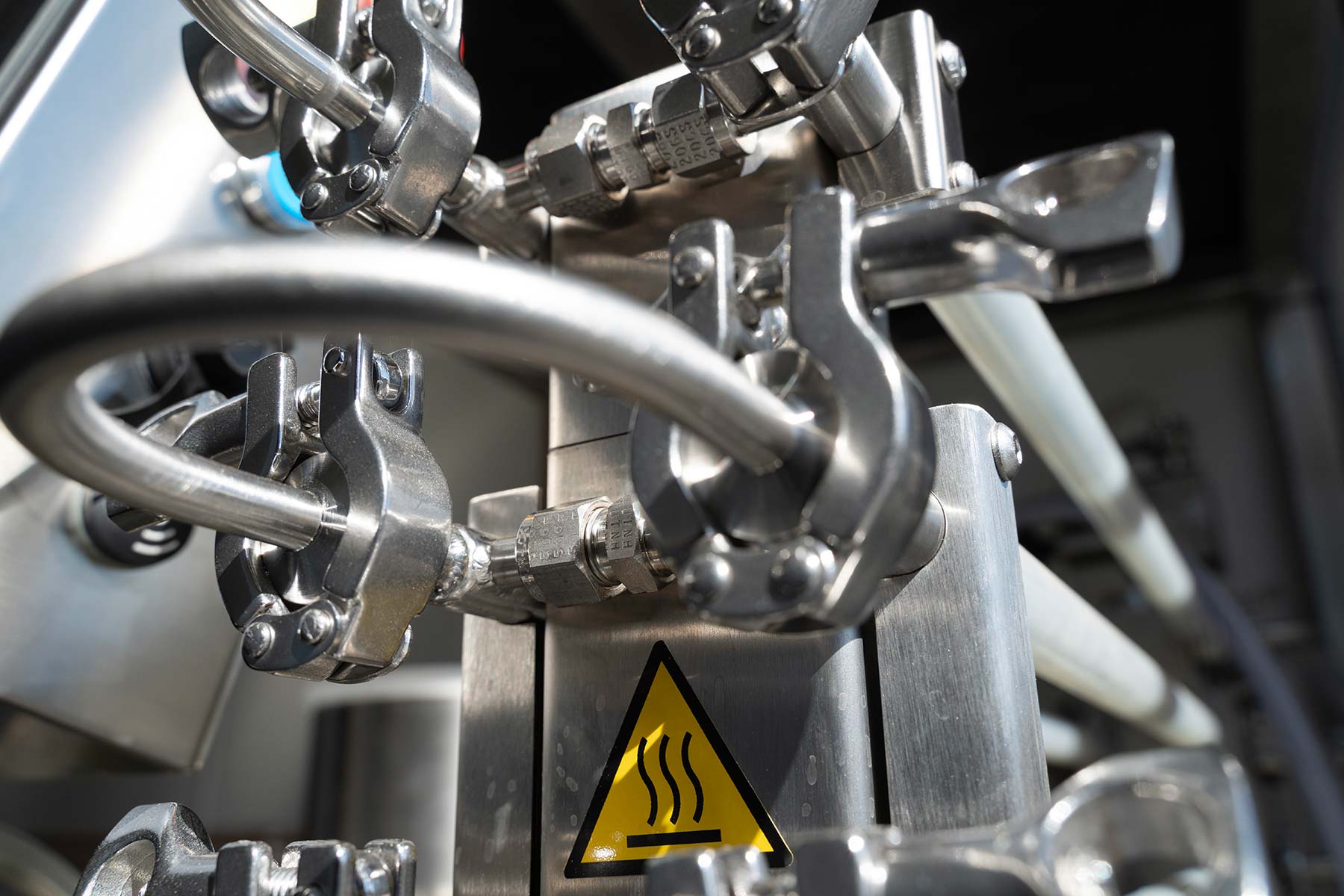Technology
The value of our circular concept

By using microorganisms, water, electricity and biotechnology, we can produce sustainable protein for fish feed
Already today, the aquaculture industry faces major challenges related to an excessively high environmental footprint, and the feed can amount to up to 70–90 % of CO2 the discharge of a Norwegian-produced salmon.
By co-locating our technology with land-based fish farms, we have created a circular system for CO2- recycling and protein production for fish feed. The process ensures an environmentally friendly and predictable production of high-quality protein.

The future of protein production
The biomass is produced by microorganisms consuming CO2, together with hydrogen and oxygen from the electrolysis of water. The microorganism is fast-growing, so that the amount of protein in production doubles every 3–4 hours. The biomass thus becomes a protein source that can be harvested and dried into powder. This is food production without the need for agriculture.
The entire process takes place in our specially constructed tanks and the volume can be scaled as needed.
G2F collaborates with sister company EcoFishCircle AS to establish a circular process for the reuse of CO2. EFC develops RAS-technology designed for capturing CO2 from seawater. EFC will supply biogenic CO2 to G2F, and in return they receive protein powder of very high quality, which can replace soy protein in the feed for the fish.
Combined with electrolysis, EFC’s circular concept converts CO2, water and renewable energy into premium salmon and protein. We call it Photosynthesis 2.0.
Cost effective, scalable and clean
The production of the biomass is very cost-effective, and the solution is scalable to industrial production. As the production takes place in connection with the breeding facilities, both costs and environmental impact that come with the production and transport of soya are avoided.
Production takes place 24 hours a day, all year round and we double the amount of protein every 3-4 hours, regardless of climate, weather conditions and season. The end product is a microbial biomass containing 70 % or more of crude protein, in addition to 6–8% of fat in the form of phospholipids, 5–7 % of highly bioavailable minerals and 6–8 % of fiber. The product also has a good amino acid profile that resembles fishmeal with good digestibility.
With ground-breaking technology, G2F produces high-quality protein, with minimal impact on the climate and environment.
Summary
G2F's value proposition is to produce pure, premium protein based on a sustainable and stable process at a competitive price.
Clean and high quality
Completely natural and of the highest quality
Meets the salmon's natural nutritional needs
No pollution
Sustainable by design
85% reduction of CO2-emissions compared to soy
No deforestation
70% smaller area footprint
99% reduction in water consumption
Scalable and stable
24/7/365 production without seasonal fluctuations
Regardless of climate and weather conditions
No limits to scaling
Cost-effective technology
Compared to other sustainable proteins
Efficient conversion of main raw materials and high yields
Own reactor design

